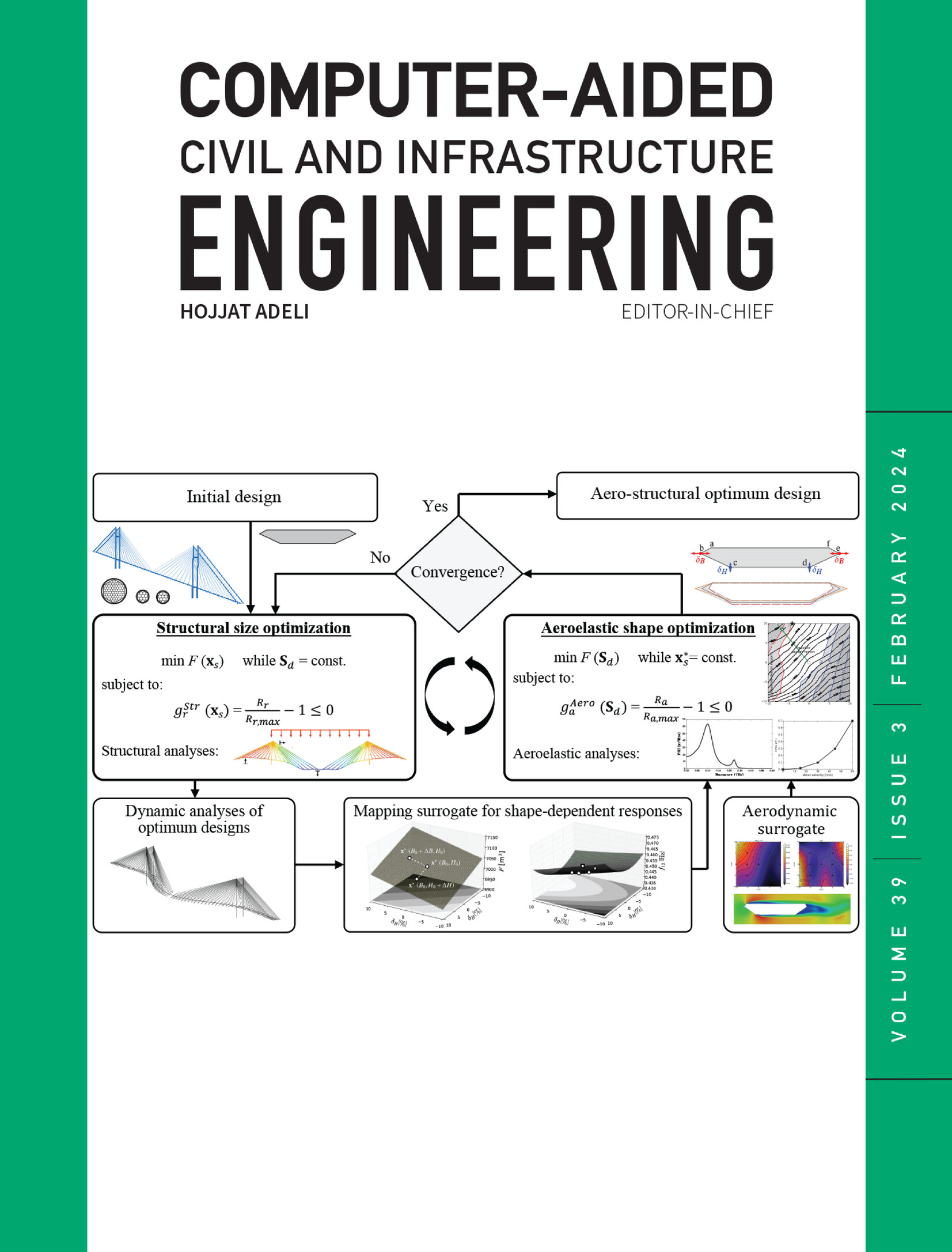预测波特兰水泥混凝土路面沥青混凝土覆盖层国际粗糙度指数的机器学习模型
IF 8.5
1区 工程技术
Q1 COMPUTER SCIENCE, INTERDISCIPLINARY APPLICATIONS
引用次数: 0
摘要
虽然国际粗糙度指数(IRI)的估计是至关重要的,但之前的研究在解决波特兰水泥混凝土(PCC)路面上沥青混凝土(AC)覆盖层的IRI预测方面面临挑战。本研究引入机器学习来预测PCC路面上AC覆盖层的IRI,重点是结合覆盖前处理来反映其复合特性。这些处理方法分为混凝土路面修复(CPR)和压裂方法。通过有效地捕捉覆盖前处理的影响,所开发的模型优于传统方法,这一点可以从CPR和压裂方法在IRI预测方面的显著差异中得到证明。此外,路面损伤的类型和发生情况也因铺层前处理的不同而不同。当为每个治疗组开发单独的IRI预测模型时,与合并所有治疗的原始模型相比,它们表现出更高的性能。这证明了基于特定预覆盖处理类型的个性化建模的重要性。本文章由计算机程序翻译,如有差异,请以英文原文为准。
Machine learning models for predicting the International Roughness Index of asphalt concrete overlays on Portland cement concrete pavements
Although estimating the International Roughness Index (IRI) is crucial, previous studies have faced challenges in addressing IRI prediction for asphalt concrete (AC) overlays on Portland cement concrete (PCC) pavements. This study introduces machine learning to predict the IRI of AC overlays on PCC pavements, focusing on incorporating pre‐overlay treatments to reflect their composite characteristics. These treatments are categorized into concrete pavement restoration (CPR) and fracturing methods. The developed models outperformed conventional approaches by effectively capturing the impact of these pre‐overlay treatments, as evidenced by the distinct differences in their contributions to IRI predictions between the CPR and fracturing methods. Additionally, the types and occurrences of pavement distresses varied depending on the pre‐overlay treatments applied. When separate IRI prediction models were developed for each treatment group, they demonstrated improved performance, compared to the original model that combined all treatments. This demonstrates the significance of individualized modeling based on specific pre‐overlay treatment types.
求助全文
通过发布文献求助,成功后即可免费获取论文全文。
去求助
来源期刊
CiteScore
17.60
自引率
19.80%
发文量
146
审稿时长
1 months
期刊介绍:
Computer-Aided Civil and Infrastructure Engineering stands as a scholarly, peer-reviewed archival journal, serving as a vital link between advancements in computer technology and civil and infrastructure engineering. The journal serves as a distinctive platform for the publication of original articles, spotlighting novel computational techniques and inventive applications of computers. Specifically, it concentrates on recent progress in computer and information technologies, fostering the development and application of emerging computing paradigms.
Encompassing a broad scope, the journal addresses bridge, construction, environmental, highway, geotechnical, structural, transportation, and water resources engineering. It extends its reach to the management of infrastructure systems, covering domains such as highways, bridges, pavements, airports, and utilities. The journal delves into areas like artificial intelligence, cognitive modeling, concurrent engineering, database management, distributed computing, evolutionary computing, fuzzy logic, genetic algorithms, geometric modeling, internet-based technologies, knowledge discovery and engineering, machine learning, mobile computing, multimedia technologies, networking, neural network computing, optimization and search, parallel processing, robotics, smart structures, software engineering, virtual reality, and visualization techniques.

 求助内容:
求助内容: 应助结果提醒方式:
应助结果提醒方式:


